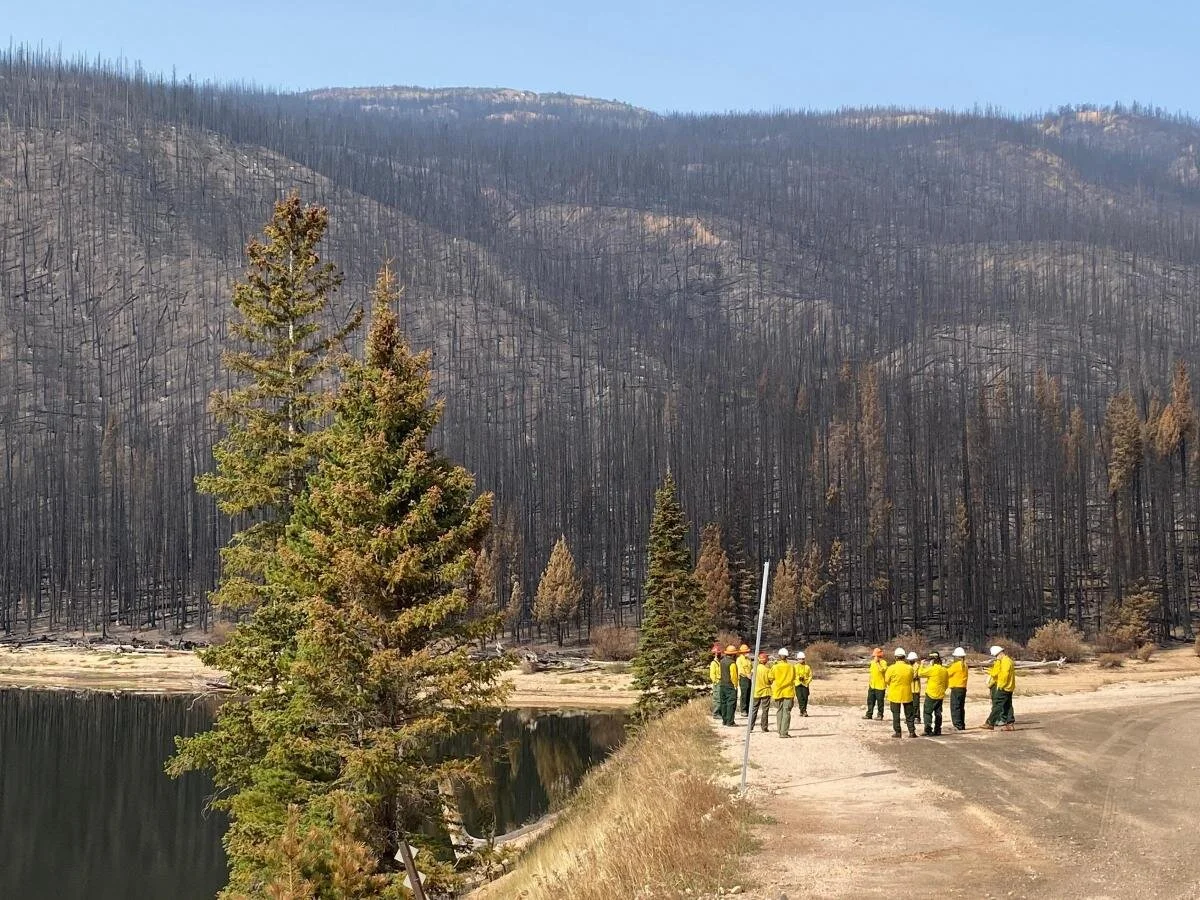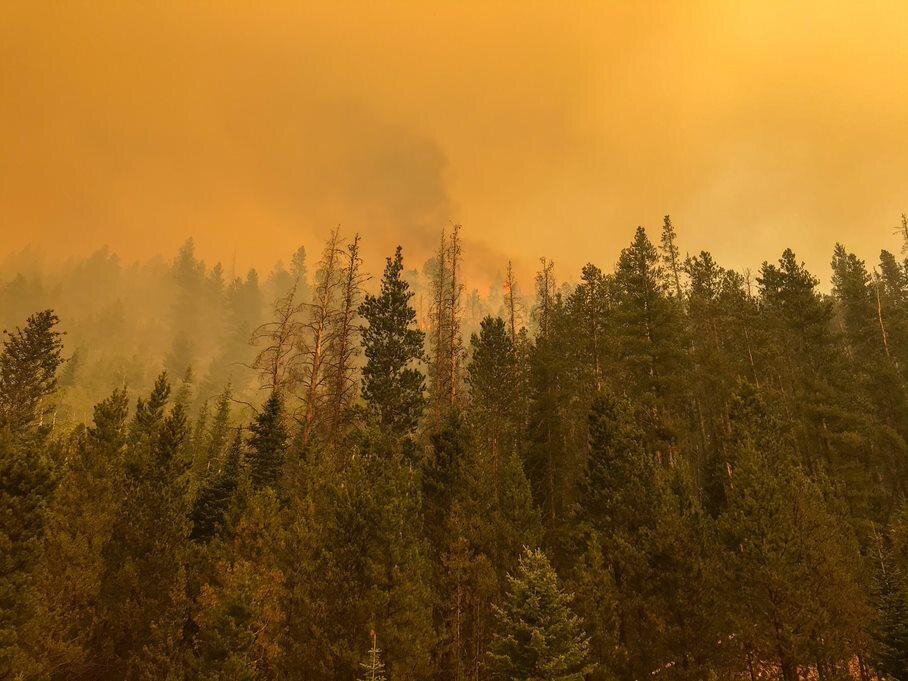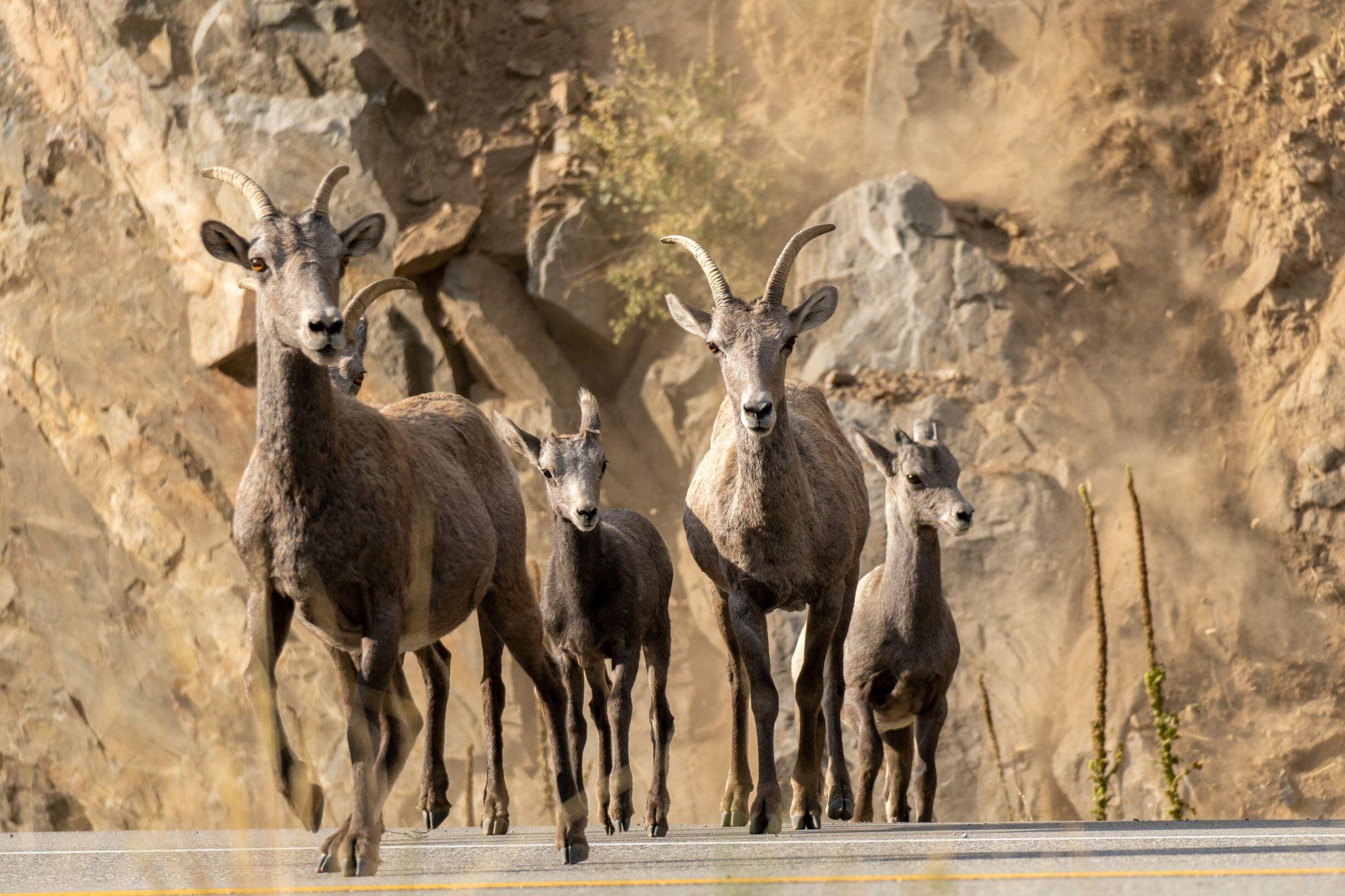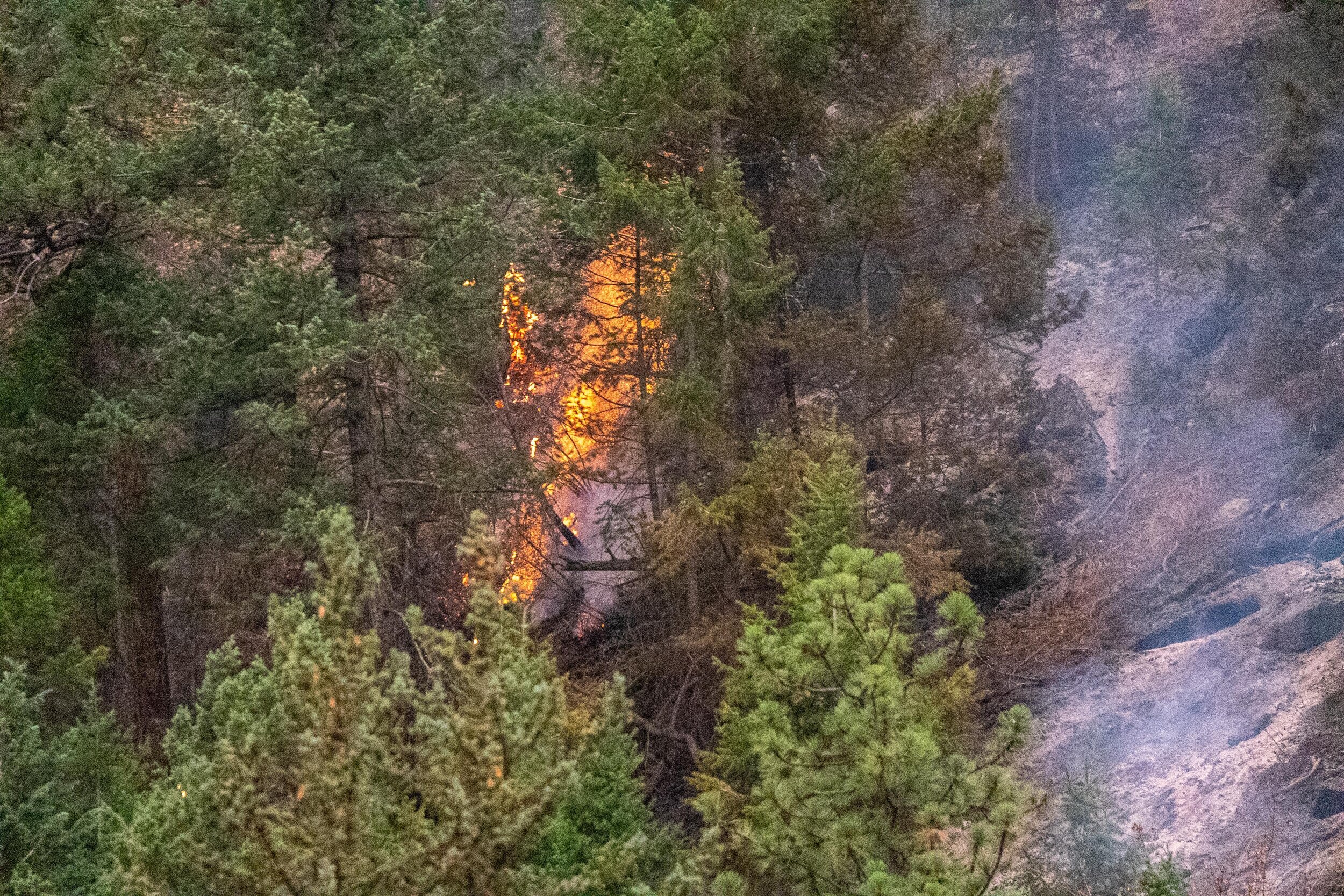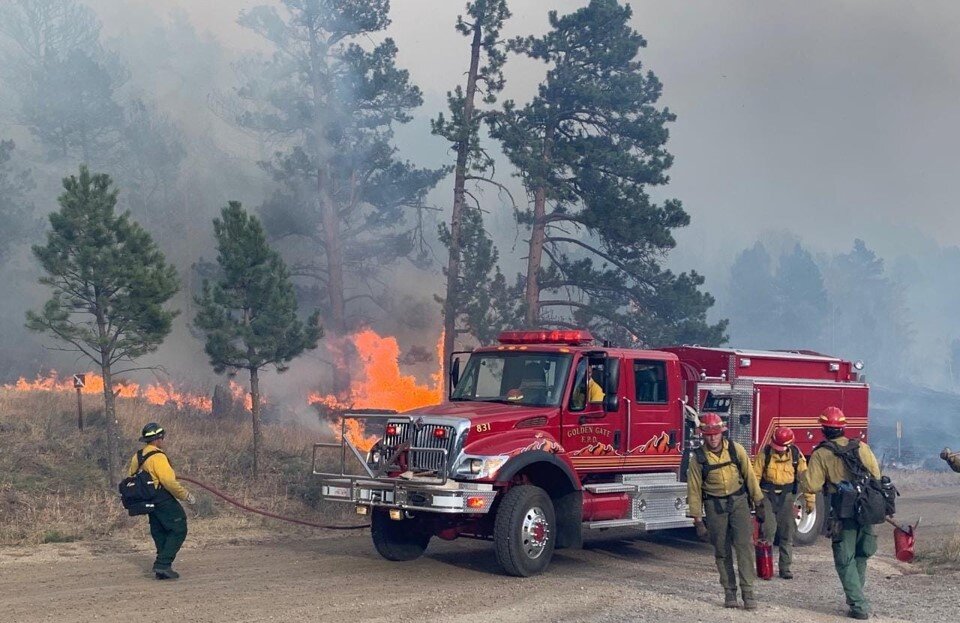About the Cameron Peak Fire
On August 13, 2020, the Cameron Peak Fire (CPF) ignited in the Upper Poudre River Watershed near Cameron Pass between Cameron Peak and Chambers Lake within the Arapaho & Roosevelt National Forest. Over the course of 112 days the fire burned 208,913 acres, becoming the largest wildfire in Colorado’s recorded history. The cause of the fire remains under investigation.
Cameron Peak Fire Final Burn Area Map. To download a PDF version of this map visit: https://inciweb.nwcg.gov/incident/map/6964/0/111376
Cameron Peak Fire Facts:
325 mile long fire perimeter
Over 1,050 stream miles (596 mi are in the Poudre watershed)
124 trail miles (95 mi in the Poudre watershed)
Over 41,700 acres of designated Wilderness Areas burned
32 miles of Wild and Scenic river corridor burned
Three watersheds affected - Poudre, Big Thompson & Laramie
At least five reservoirs that store and deliver water to the Front Range for agriculture and drinking water needs
At least 16 mountain communities and neighborhoods in the burn area or immediately adjacent to it have been affected
492 structures destroyed (residential and outbuildings)
Cameron Peak Fire on InciWeb: www.inciweb.nwcg.gov/incident/6964/
Post-Fire Restoration
Protecting water quality, life and property
CPRW’s Role in Post-Fire Recovery, Mitigation and Restoration
Since the Cameron Peak Fire ignited, the Coalition for the Poudre River Watershed (CPRW) has been deeply involved in post-fire recovery, mitigation and restoration efforts, working to ensure that we have the resources needed to help the watershed recover from this fire and become more resilient in the face of future natural disasters.
Cameron Peak Fire Webinars & Video Resources
Cameron Peak Fire Photos
Resources & Research
Post-Fire Response
Cameron Peak Fire Forest Service Burned Area Emergency Response (BAER) Executive Summary
BAER Fisheries Report - Prepared by: Matthew Fairchild, Forest Fish Biologist, Arapaho & Roosevelt National Forests and Pawnee National Grassland
“Post-Fire Playbook: Guidance for Counties, Tribes, Municipalities and Water Providers”
“After the Flames” - Actionable best practices for communities and agencies impacted by wildfire from Coalitions and Collaboratives, Inc.
Big Thompson Watershed Coalition - For private landowners living within the Big Thompson Watershed please contact Courtney Gutman at courtney.gutman@bigthompson.co for info about available resources.
“Cameron Peak Fire at Shambhala Mountain Center: Fire Effects in Forest Restoration Treatment by Fort Collins Conservation District” - Fort Collins Conservation District
Assessing Post-Fire Values-at-Risk With a New Calculation Tool - U.S. Forest Service, Rocky Mountain Research Station
Community Recovery Newsletter for the Cameron Peak and East Troublesome Fires - Larimer County Office of Emergency Management (Published March 9, 2021)
Larimer County Office of Emergency Management - Cameron Peak Fire resources
Larimer Recovery Collaborative - The LRC’s mission is to coordinate short-term and long-term recovery efforts and maximize all available resources by not duplicating efforts. This organization represents Larimer County as a region, not just Larimer County the government.
Arapaho and Roosevelt National Forests - Fire Recovery Information (includes all five major fires of 2020 w/in the National Forest System lands on the Arapaho and Roosevelt National Forests)
Post-Fire Restoration
CPRW and our partners are currently working on post-fire planning that will help to guide our post-fire restoration efforts for years to come.
Post-Fire Land Rehabilitation FAQ: Cameron Peak Fire - Natural Resources Conservation Services
Burned Area Emergency Response Treatment Catalog - U.S. Forest Service
Crew Leader Training for Post-Fire Restoration - Wildlands Restoration Volunteers
“Soil Erosion Control After Wildfire” - Colorado State University Extension & Colorado State Forest Service
Presentation: “Post-fire Recovery and Restoration: Soils, Runoff and Erosion” - Lee H. MacDonald, Colorado State University
Post-Fire Treatment Effectiveness for Hillslope Stabilization - U.S. Forest Service, Rocky Mountain Research Station
Hillslope Treatment Effectiveness and Performance Characteristics Summary Chart - U.S. Forest Service, Rocky Mountain Research Station
Field Guide for Mapping Post-Fire Soil Burn Severity - U.S. Forest Service, Rocky Mountain Research Station
“Living Streambanks: A Manual of Bioengineering Treatments for Colorado Streams” - AloTerra Restoration Services, LLC, and
Golder Associates, Inc.
“Field Guide for Harvesting and Installing Willow and Cottonwood Cuttings” - John Giordanengo, Synergy Ecological Restoration & Randy Mandel, Golder Associates
Plant Propagation Manual (access database - click to download to your computer) - Rocky Mountain Flycasters
Seed Mixes, BMPs and Guidelines for Seeding and Mulching in the Cameron Peak Burn Area - Larimer County
Natural Resources Conservation Services (NRCS) “After the Fire” Fact Sheets
“After the Fire: Seeding” - Natural Resources Conservation Services
“After the Fire: Contour Sandbags” - Natural Resources Conservation Services
“After the Fire: Contour Wattles” - Natural Resources Conservation Services
“After the Fire: Dike” - Natural Resources Conservation Services
“After the Fire: Diversion” - Natural Resources Conservation Services
“After the Fire: Hand Raking” - Natural Resources Conservation Services
“After the Fire: Hazard Tree Removal” - Natural Resources Conservation Services
“After the Fire: Hillside Home Drainage” - Natural Resources Conservation Services
“After the Fire: Hydromulching” - Natural Resources Conservation Services
“After the Fire: Log Erosion Barriers” - Natural Resources Conservation Services
“After the Fire: Mechanical Scarification” - Natural Resources Conservation Services
Water Quality
“Cameron Peak Fire: Effects on Air and Water Quality” - City of Fort Collins
Article: CSU team lands NSF award to study streams, snowpack in Cameron Peak Fire area
Forests, Fire, and Faucets: What We Are Learning About Lingering Water Quality Effects of High-Severity Wildfires - Science You Can Use Bulletins, USFS Rocky Mountain Research Station, Nov/Dec 2021
Other Wildfire Resources
Wildfire Resources - Larimer County - CSU Extension
Fire Behavior Infographic - Colorado Forest Restoration Institute at Colorado State University
“Wildfire effects on road surface erosion, deposition, and road–stream connectivity” - Gabriel Sosa-Pérez and Lee MacDonald
“Connectivity of post-fire runoff and sediment from nested hillslopes and watersheds” - Codie Wilson
“Tree regeneration following wildfires in the western US: a review” - Camille S. Stevens-Rumann and Penelope Morgan
Learn from the burn: The High Park Fire 5 years later (website) - U.S. Forest Service, Rocky Mountain Research Station
Learn from the burn: The High Park Fire 5 Years Later (PDF) - U.S. Forest Service, Rocky Mountain Research Station
Resilience Test: Can Ponderosa Pine Bounce Back After High-Severity Fire? - Science You Can Use Bulletins, USFS Rocky Mountain Research Station, Sept/Oct 2021

